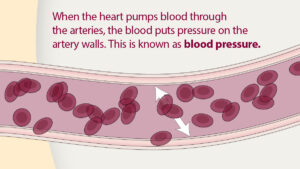What is a Contusion?
The term contusion is one that is common in the medical world, and when most people hear it mentioned they usually think that it is quite a serious medical condition. However, the word contusion is the medical name for a bruise, which is what occurs when blood vessels are damaged or broken after one takes a hard hit on the skin. This leads to injuries to the tissue just under the skin such as bones, muscles and the tissue underneath, therefore causing the bruising we normally see. This is usually observed as a discolored spot on the surface of the skin and is usually as a result of pooling of blood just underneath the surface of the skin. It should be noted that parts of the body such as the eyes and moth can also bruise, with the same applying to internal organs such as the lungs, especially when one inhales toxic chemicals. There is a lot to learn about contusion and this article will look to highlight everything we need to know about contusions by covering every single aspect of it that we can.
First up, let us look at the various causes of contusions. More often than not, contusions are as a result of a blow or trauma to the body. Puncturing or breaking of blood vessels or capillaries occur when the blow is hard enough and this can lead to blood leaking out and clotting in the surrounding area, leading to the formation of discolored spots we see on the skin, and which are referred to as bruise or contusions. Most of the time, as stated above, contusions are due to trauma, but as is discussed over at frontlineer.com by the subject matter experts over there, this is not always the case and there are other avenues through which one can get a contusion. These include microscopic muscle strains and tears as well as thin skin which is mostly due to old age and that is why old folks usually bruise very easily and more often than most people. Another thing that leads to one getting a contusion is through bleeding disorders, especially those that cause internal bleeding as well as taking of blood-thinning medications. Blood-thinning medications, as has been discussed in another platform, are usually taken to get rid of clots in the blood streams to prevent and treat life-threatening conditions such as heart attacks and strokes. However, it does seem that one of the side effects, if you like, of taking them, is an increased chance of getting a contusion.
Next up we shall take a look at the symptoms of contusions, whereby the main symptoms, as has been mentioned earlier is the formation of a discolored spot on the skin. This spot usually starts out being reddish in color, and then as the blood underneath the skin clots, it turns to blue, then fades to a greyish green or yellowish color after a couple of days as the contusion heals. Another notable symptom as far as contusions go is that they are usually tender when touched, although this symptom also goes away gradually as the contusion heals. Next up, we shall take a look at the different types of contusions. First up we have bone contusions which are basically when bones are bruised. They mostly occur due to sports, especially contact sports or hard falls. Depending on the severity of the bruise, healing may take a couple of days or even several months. Some of the symptoms, as covered in detail over at frontlineer.com, indicating a bone contusion include joint swelling, stiffness as well as tenderness that lasts longer than for a normal bruise. Next type of contusions are skin and muscle contusions which are also referred to as soft tissue contusions and are quite common. Symptoms include tenderness, light swelling and discolored skin. Finally, we have brain contusions, which are also referred to as cerebral contusions. They occur when one develops a bruise on brain tissue and is an example of a traumatic brain injury. Severe cases can be life-threatening if not treated with symptoms including dizziness, memory loss, concentration issues, severe headaches as well as insomnia. In severe cases one may lose consciousness, with immediate medical attention required for cases of brain contusions, especially if one is exhibiting the symptoms mentioned above.
Treatment as far as contusions go mostly depends on the severity of the contusion, with the R.I.C.E technique (resting, icing, compression and elevation) being recommended by subject matter experts such as those over at frontlineer.com. However, there are instances where one should seek emergency medical attention for contusions such as in instances where one begins to develop frequent, large bruises, in cases where the bruise doesn’t heal within two weeks, it occurs for no reason and quite easily at that, it is accompanied by severe swelling and pain or if the bruise is accompanied by abnormal bleeding in the gums or nose.
Hopefully, after reading this article, you have been able to know exactly what contusions are, with more on this and other topics to be found over at frontlineer.com.




